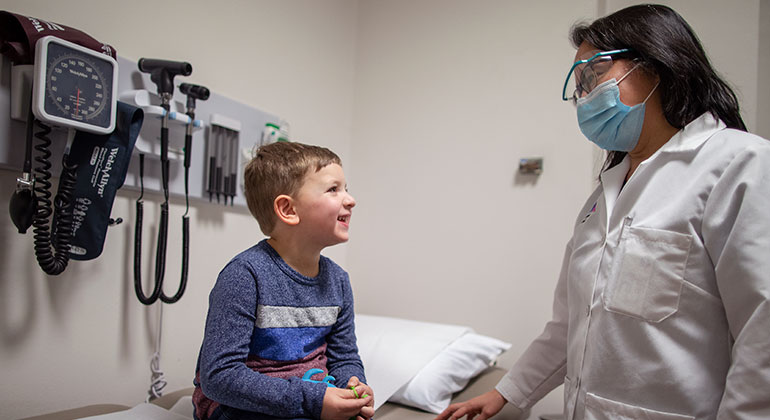Juvenile Angiofibromas

Mount Sinai’s Pediatric Cardiovascular Program has extensive experience with diagnosing and treating angiofibromas. These are benign (non-cancerous) vascular tumors that usually appear in the head and neck area in young males around the time of puberty. A rare condition, juvenile angiofibromas can cause nasal obstruction and bleeding, hearing loss, and even bone damage. Typically, they look like red, raised bumps that may bleed on contact. The bumps usually grow through adolescence and early 20s. We believe that juvenile angiofibromas continue to grow for years, up to the late teens and early 20s; after this, there may be some spontaneous regression.
About one in five of these tumors appear after age 20 and we have seen juvenile angiofibromas in men up to the age of 50. Almost all juvenile angiofibroma patients are males. There are more cases in Egypt, India, Southeast Asia, Kenya, and Mexico than anywhere else.
There is a relationship between the behavior of angiofibromas and sex hormones. Research shows that angiofibromas get smaller after exogenous estrogen therapy and increase in size following testosterone treatment. Juvenile angiofibroma symptoms relate to the size and direction of extension in the growth.
Diagnosis
We use imaging scans to help us understand the size and extent of the angiofibroma tumors. Computed tomography (CT scans) show the size of the tumor and any involvement with bone. Magnetic resonance imaging (MRI) displays tumor vascularity and extent. Angiography allows us to see how the tumor is getting its blood supply, its relationship with the external and internal carotid arteries, and the extension of the tumor.
Treatment Options
We often use embolization to close abnormal blood vessels using angiographic catheters. It is very helpful to close the vessels before we remove them surgically, especially on the jaw and face. If we cannot remove a tumor, for anatomical or medical reasons, we use a more aggressive embolic material to help control bleeding and to stabilize the tumor and prevent it from growing.
After we embolize the juvenile angiofibromas, we can remove it surgically. Surgical removal is the most effective treatment for controlling this disease.
If we cannot remove a tumor, we use radiation treatment. We may also use radiation before embolization. Another effective treatment is radiation followed by devascularization using embolization. Your doctor will advise you on the most appropriate treatment for your condition.